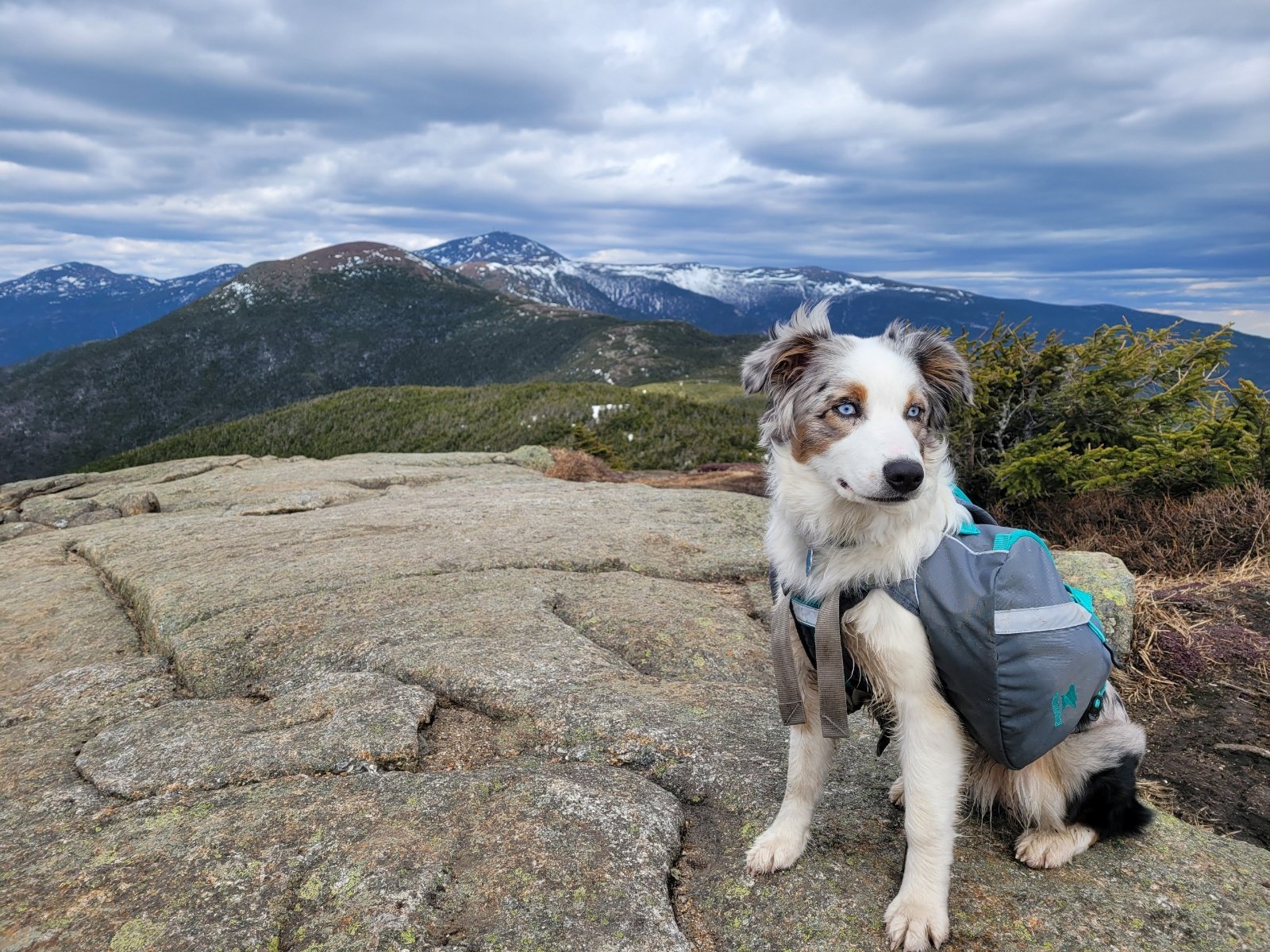Tips for Winter Hiking With Your Pup
Once I got a dog, I knew with the right measures, she’d be able to enjoy the outdoors too. Here is what works for us when we hit the trail:
The first thing people tell you when you move to New England is that winter is brutal. Obviously I didn’t grow up here, so I didn’t have the experience of shoveling for hours in the morning or having to walk to school in freezing temperatures. That might be why winter is such a beauty to me.
As someone who grew up without a single snowflake (except that one time Dallas turned into a winter wonderland), the winter season is a novelty to me each year. I keep wondering when I’ll turn bitter toward the season, but it hasn’t happened yet. Here’s why I think it hasn’t: I discovered winter activities.
Hiking is one of my favorite things to do, so I had to try it out in winter. Once I got a dog, I knew with the right measures, she’d be able to enjoy the outdoors too. Here is what works for us when we hit the trail:
Tip 1: Know your dog’s capabilities.
You know your pet best and know what they can handle. I never underestimate a dog’s ability given that most love being in the wild (and I’ve seen a Dachshund hike the same mountains my Aussie does), but obviously there are limits based on breed and size.
From a young age, my pup was conditioned to the trails. At three and four months she was trained on short, local hikes with little to no elevation gain. Slowly, she worked her way up. She can crush any mountain and elevation gain. It didn’t come as a surprise when she started to take on 4,000 footers in New Hampshire and New York. But we definitely didn’t venture off on one before we knew she was ready.
If you don’t have the White Mountains in your backyard, there are still ways for you to mimic an intense hike without the massive peaks. Here’s how:
Find a long trail, ideally with decent elevation gain. You can add difficulty in three ways: (1) do the trail twice (or more), (2) add a backpack to your dog’s back with water bottles inside, and (3) hike in various weather conditions or seasons.
Tip 2: Pick an appropriate hike.
Whether you’re starting off hiking with your dog, or you and your dog are more seasoned out there, the hike you pick is the most important decision you’ll make that day. If you aren’t capable of carrying your dog, or know that with their fur (or lack there of), they’ll be cold, pick a shorter hike where you can stay in control.
Of course you can never be too prepared for the mountains, but you can always aim to expect the unexpected.
Tip 3: Pack these necessities.
Even though dogs are wild animals and thrive out on the trail smelling all the smells, there are still steps to take to ensure your pup’s well-being is taken care of. I pack the following items for my dog and consider them necessities:
Dog first aid kit
You never know what your pup may step on or get into, so it’s best to have a first aid kit handy in case of emergencies, which are more common in the winter.
Backpack for her to carry
I have this backpack for Koah and it’s adjustable to her body. She’s had it from a young age and we conditioned her with an empty backpack, then slowly added weight evenly for her. It’s very easy to put on her and has a piece to attach a leash!
This comes particularly in handy for long, winter hikes when energy is expended and dogs need water and food. The perk of winter hiking is that there is usually a plethora of snow for dogs to eat to keep their bodies hydrated.
Collapsible food and water bowls
These foldable bowls are an absolute must. They are easy to wash and very lightweight. Tip: If your pup is picky, try to help the adjustment to these bowls by using them at home too. They are also great for travel!
Two towels
I don’t know about your dog, but it feels like mine actively seeks every opportunity on a hike to bring back as much dirt and mud as possible into my newly vacuumed car. If that sounds familiar, bring one towel for the post-hike mess. I love that my dog enjoys herself on a hike, but I try to clean
Dog food and treats
My dog rarely eats during a hike, so even though I pack food for her, she usually opts out. I bring treats to maintain training on the trail and provide her fuel in a more efficient way since she doesn’t eat on a hike otherwise.
Waste bags
Part of leaving no trace in the woods is picking up your pup’s waste. Always keep an extra bag or two on you (or in your pup’s pack).
Leash
As much as I love letting Koah run free in the woods, most trails require dogs to be leashed. Keep this in mind when passing other hikers on the trail.
Personalized collar
Like I said before, expect the unexpected. You never know if your dog may get lost, or get loose from your leash. I purchased this collar and personalized it with my dog’s name and my phone number in case she ever gets away from me. Again, it has never happened to me, but it’s best to plan ahead.
Are you ready to take on the trails with your pup this winter? If you don’t have a furry friend, but still want to tackle the mountains in winter, explore my recommendations for gear below!




